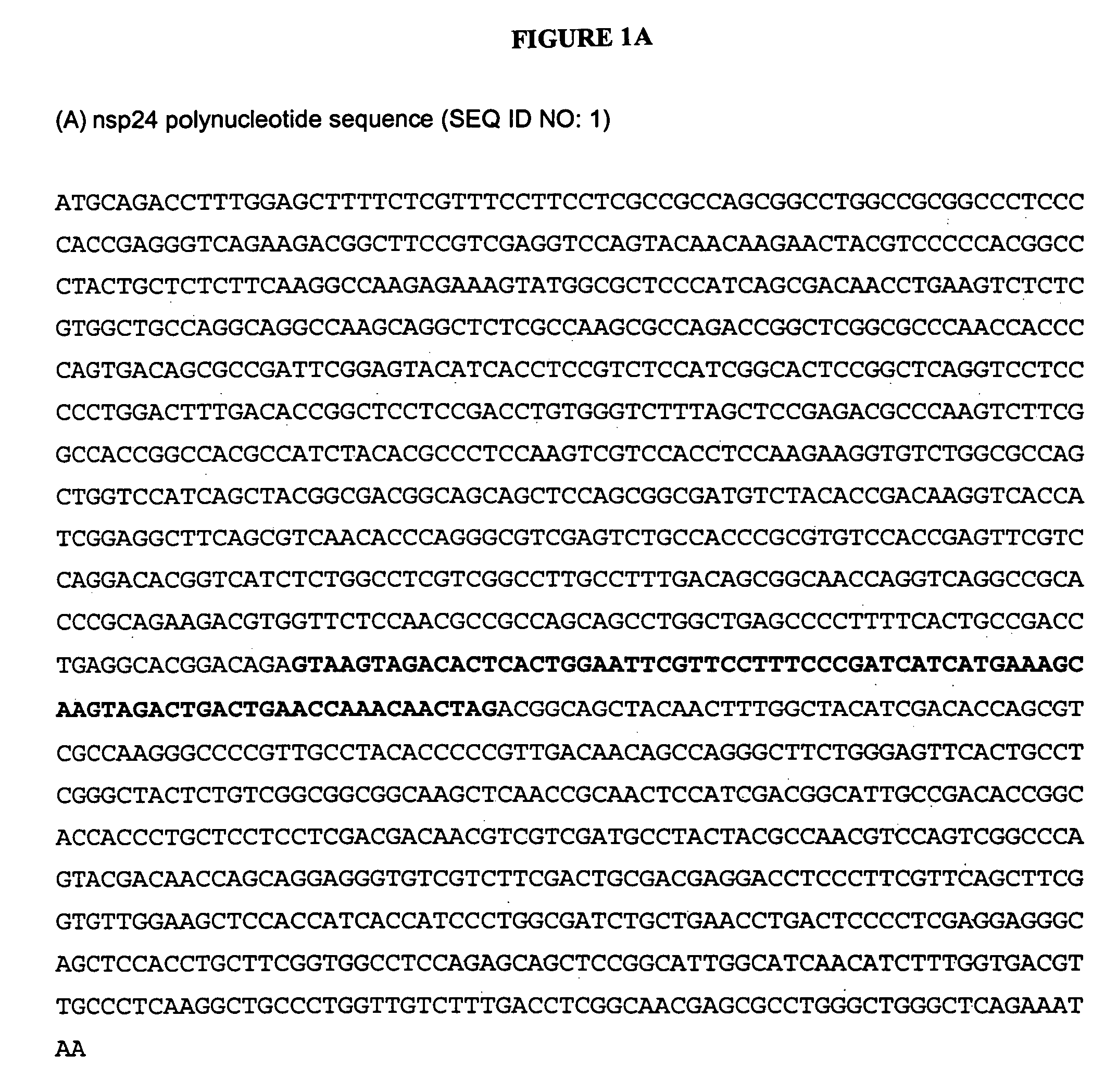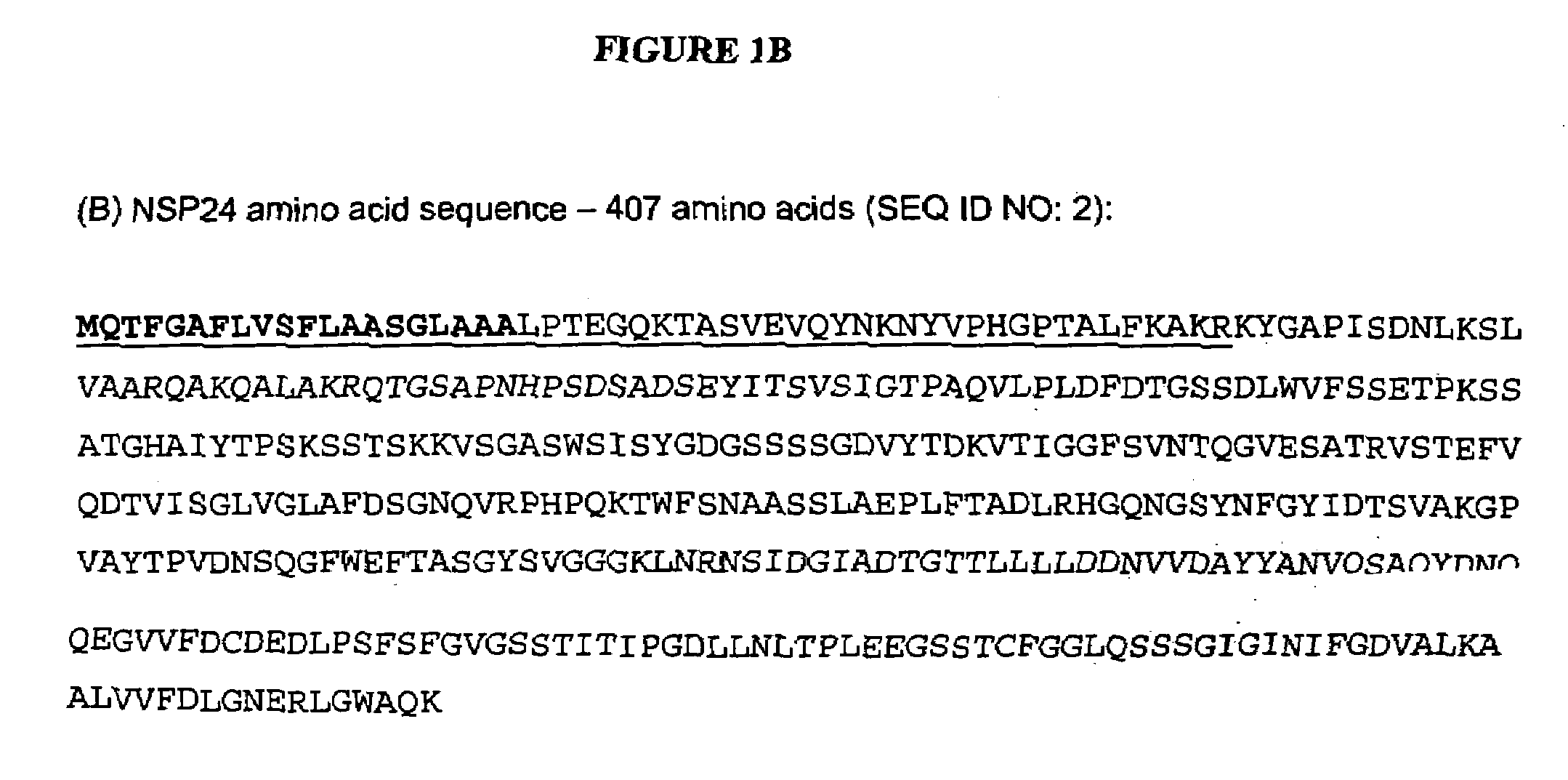Acid fungal protease in fermentation of insoluble starch substrates
a technology of insoluble starch and acid fungal protease, which is applied in the field of acid fungal protease in the fermentation of insoluble starch substrates, can solve the problems of energy-intensive direct and indirect heating methods, and achieve the effect of decreasing the percentage of residual starch in the broth and the amount of residual starch
- Summary
- Abstract
- Description
- Claims
- Application Information
AI Technical Summary
Benefits of technology
Problems solved by technology
Method used
Image
Examples
example 1
Cloning of Protease, NSP24 and Transformation into Trichoderma reesei
[0169]Genomic DNA was extracted from T. reesei strain QM6a. PCR primers were designed, based on the putative protease sequence found in contig 1-5500 of the T. reesei genome (Joint Genome Institute (JGI) T. reesei genome v1.0). The forward primer contained a motif for directional cloning into the pENTR / D vector (Invitrogen).
[0170]The sequence of the afp6f primer was CACCATGCAGACCTTTGGAGCT (SEQ ID NO: 5), and the sequence of the afp7r primer was TTATTTCTGAGCCCAGCCCAG (SEQ ID NO: 6). The 1.3 kb PCR product was purified by gel extraction (Gel Purification kit, Qiagen) and cloned into pENTR / D, according to the Invitrogen Gateway system protocol.
[0171]The vector was then transformed into chemically competent Top10 E. coli (Invitrogen) with kanamycin selection. Plasmid DNA, from several independent clones, was digested with restriction enzymes to confirm the correct size insert. The protease gene insert was sequenced (S...
example 2
Effect of Protease During Hydrolysis of Granular Starch Substrate
[0178]Ground corn (#2 Yellow Dent), which is typically used in the ethanol industry was fractionated to obtain the endosperm fraction. Both the corn and endosperm / gluten fraction were ground to obtain a sample that would pass >95% through a 1.5 mm screen (Perten Laboratory Mill 3100, Sweden). The moisture content and the total starch content of whole ground and endosperm fractions were determined (each flask contained equal amounts of starch (32% DS for ground corn and 29.9% DS for the endosperm fraction). The pH was adjusted to 4.2 using 6NH2SO4. AnGA (DISTILLASE L-400, Genencor International, Inc.) or a TrGA added at 1.0 GAU / g ds and acid stable alpha amylase from Aspergillus kawachi (AkAA) obtained from expression in Trichoderma as described in USP 2005 / 0266543 was added at 3 SSU / g DS. NSP24 was added at 0.5 SAPU / g DS along with 400 ppm urea. 5.0 g Red Start Ethanol Red dry yeast (Lesaffre Yeast Corporation, Milwauk...
example 3
[0180]Effect of protease on the alcohol yield and the residual starch content of the DDGS during the fermentation of granular starch containing substrates, whole ground corn and fractionated corn (degermed corn) with different particle sizes.
[0181]Yellow Dent corn # 2 was ground to obtain ground whole corn with varying particle sizes using a laboratory scale hammer mill (Perten Laboratory Mill 3100, Sweden) and degermed corn was used as an example for fractionated corn. The particle size distribution was measured using a standard sieve with different pore sizes. In Table 2 below 95% means about 95% of the particles passed through a 30 mesh screen (0.59 mm) and about 5% did not pass through the screen; they were reatined on the screen; 70% means about 70% of the particles passed through a 30 mesh screen (0.59 mm) and about 30% did not pass through the screen; they were retained on the screen; and 50% means about 50% of the particles passed through a 30 mesh screen (0.59 mm) and about...
PUM
| Property | Measurement | Unit |
|---|---|---|
| temperature | aaaaa | aaaaa |
| temperature | aaaaa | aaaaa |
| temperature | aaaaa | aaaaa |
Abstract
Description
Claims
Application Information
 Login to View More
Login to View More - R&D Engineer
- R&D Manager
- IP Professional
- Industry Leading Data Capabilities
- Powerful AI technology
- Patent DNA Extraction
Browse by: Latest US Patents, China's latest patents, Technical Efficacy Thesaurus, Application Domain, Technology Topic, Popular Technical Reports.
© 2024 PatSnap. All rights reserved.Legal|Privacy policy|Modern Slavery Act Transparency Statement|Sitemap|About US| Contact US: help@patsnap.com










